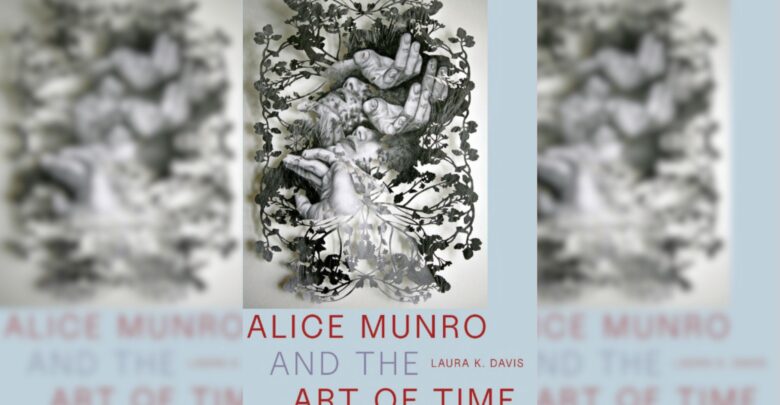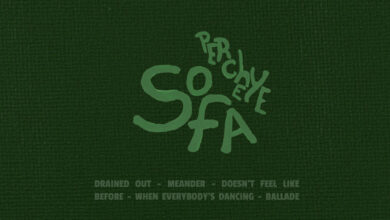Book Review: ‘Alice Munro and the Art of Time’ by Laura K. Davis
An academic examination of the Canadian literary icon’s uses of time in her short story collections.
 Supplied
SuppliedAlice Munro and the Art of Time is Laura K. Davis’ latest monograph contribution to the field. Davis is a tenured professor at Red Deer Polytechnic, where she teaches Canadian literature and writing studies. Within this book, she explores Munro’s life and works, focusing on specific collections and short stories. Primarily, she centres her research on genre, personal and spatial histories, and gender and literary canon, to exemplify Munro’s uses of time. While Davis’ work is an insightful addition to research on Canadian literature, it is unlikely to appeal to readers outside of this niche scholarly audience.
Munro, who passed away in 2024, was a renowned Canadian writer, known for her 163 short stories and 14 short story collections written and published over the course of her long career. In 2013, she won the Noble Prize for literature, becoming the first Canadian to do so. Numerous other prizes have been awarded to her work, including The Governor General’s Literary Award, The Giller Prize, and The Booker Prize.
In 2024, Munro’s daughter, Andrea Skinner, revealed in a Toronto Star article that her stepfather, Gerald Fremlin, sexually assaulted her when she was nine years old, and continued sexual advances until she was in her teens. When Skinner told her mother in 1992, Munro claimed she had been “told too late” and that she loved Fremlin too much. Fremlin pleaded guilty in 2005 to charges after Skinner reported him to the police. Munro stood by her husband, and remained married to him until he died in 2013. This led to a spew of media and widespread controversy surrounding Munro, her life, and her works.
Davis briefly addresses this controversy, and argues that “Munro’s stories remain nuanced, detailed, and worth studying, even after learning this new truth. It is important to pay heed to Skinner’s voice, acknowledging her story alongside Munro’s as we read and study the author in light of new revelations.” While reviewing and engaging with research on Munro, it is crucial to recognize that her literary celebrity cannot impede us from standing with survivors of sexual assault and abuse.
Davis’ book includes six chapters which each examine a specific use of time in one of Munro’s collections. Within each chapter, Davis focuses on two or three stories from its corresponding collection.
In the first chapter, “Genre, Narrative, and Time in Lives of Girls and Women,” Davis looks at Munro’s 1971 first collection of interrelated short stories which follows the protagonist, Del, as she ”comes-of-age” as a young female writer. The chapter focuses on elements such as how different characters resist or follow normative time, and how Del’s self-insertion into the literary tradition subverts male temporal and literary domination. Davis argues convincingly that this book works to “unravel and disassemble the structures that uphold time as linear, progressive, and singular.” As such, her work is useful in the analysis of subverted temporality.
The next chapter, “The Past and the Present in Who Do You Think You Are?,” similarly explores the disruption of normative time. Specifically, Davis centres on the connection between present life and past histories. In the third chapter, “Time and Corporeality,” two short stories in The Progress of Love (“Lichen” and “White Dump”) exemplify Munro’s connections to the human body and the natural environment. Davis moves away from more apparent uses of time, and towards Munro’s less apparent artistic demonstration of temporal change through corporeal elements. Although this may seem like a complicated elaboration, Davis argues her points persuasively.
Chapter four continues an exploration of narrative framing in “Friend of My Youth” and “Meneseteung” in Friend of My Youth. In the following chapter, Davis turns to look at retrospective memory in “Fiction” and “Child’s Play” in Too Much Happiness. Finally, Davis delves into Munro’s biography to examine her life writing in her final collection, Dear Life. Davis chooses rather narrow and specific frames of focus, which may limit the application of her work by a larger variety of scholars. However, I believe this specialization is necessary to her development of nuanced arguments.
As this is a scholarly publication, its audience is naturally quite narrow. I would recommend this monograph to students and teachers of Canadian literature, researchers on the life and works of Munro, and anyone interested in the use of time in contemporary short stories. As well, I suggest that readers engage with particular chapters as they pertain to the readers’ own research or interests, rather than simply reading the book cover-to-cover.
Davis’ work is a significant new contribution to the field of contemporary Canadian literature and studies on Alice Munro. Her research on time is informative and incisive. As the work is confined to a particular academic field, it is understandable that it may be lacking real-world implications outside of theory and analysis. However, by critically approaching theory of time, gender portrayals, and a myriad of other topics, Davis is able to give insight into the specific temporal aspects of Munro’s short stories in a polished and informative way.




